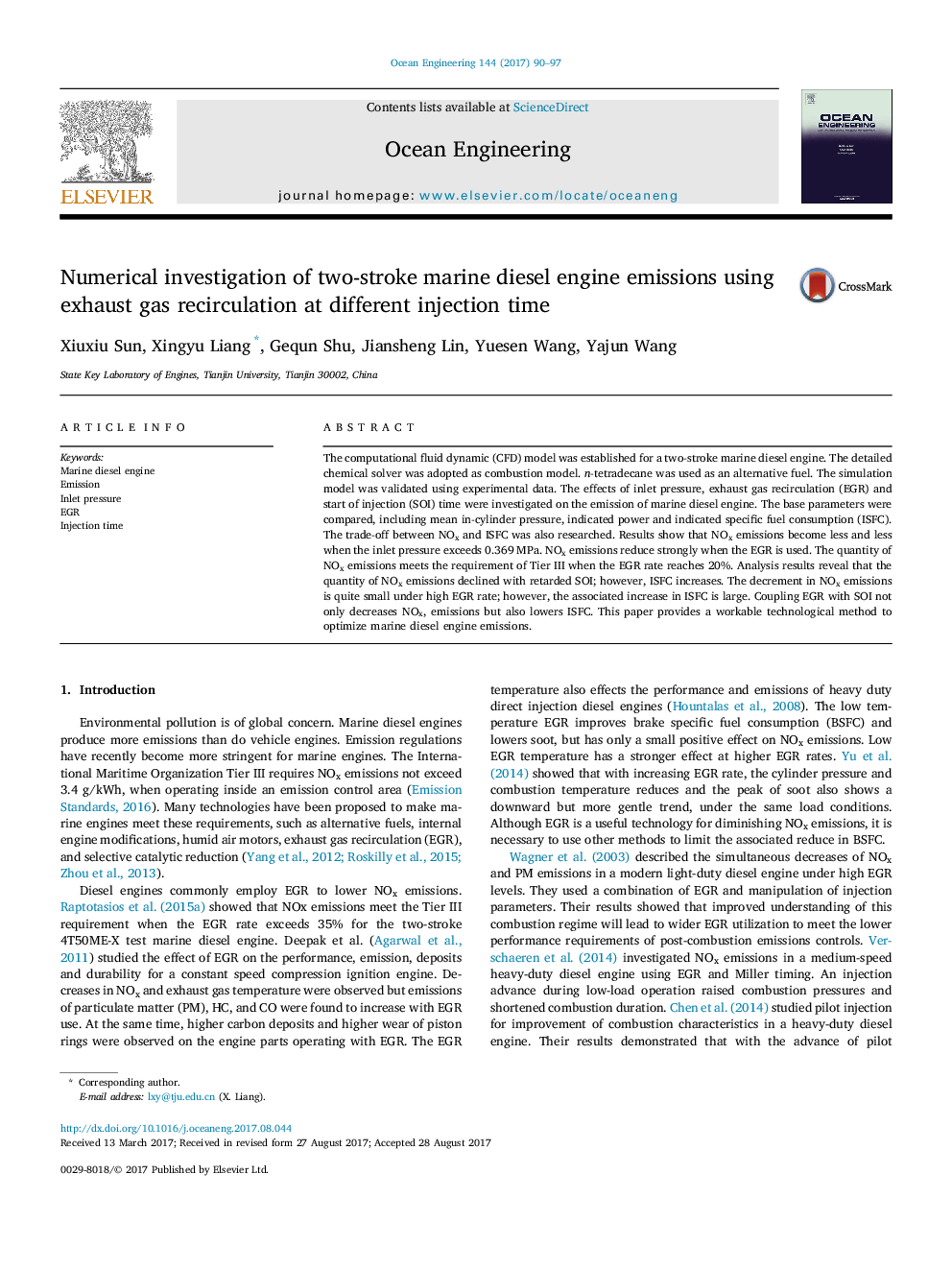| Article ID | Journal | Published Year | Pages | File Type |
|---|---|---|---|---|
| 5474209 | Ocean Engineering | 2017 | 8 Pages |
Abstract
The computational fluid dynamic (CFD) model was established for a two-stroke marine diesel engine. The detailed chemical solver was adopted as combustion model. n-tetradecane was used as an alternative fuel. The simulation model was validated using experimental data. The effects of inlet pressure, exhaust gas recirculation (EGR) and start of injection (SOI) time were investigated on the emission of marine diesel engine. The base parameters were compared, including mean in-cylinder pressure, indicated power and indicated specific fuel consumption (ISFC). The trade-off between NOx and ISFC was also researched. Results show that NOx emissions become less and less when the inlet pressure exceeds 0.369Â MPa. NOx emissions reduce strongly when the EGR is used. The quantity of NOx emissions meets the requirement of Tier III when the EGR rate reaches 20%. Analysis results reveal that the quantity of NOx emissions declined with retarded SOI; however, ISFC increases. The decrement in NOx emissions is quite small under high EGR rate; however, the associated increase in ISFC is large. Coupling EGR with SOI not only decreases NOx, emissions but also lowers ISFC. This paper provides a workable technological method to optimize marine diesel engine emissions.
Related Topics
Physical Sciences and Engineering
Engineering
Ocean Engineering
Authors
Xiuxiu Sun, Xingyu Liang, Gequn Shu, Jiansheng Lin, Yuesen Wang, Yajun Wang,
